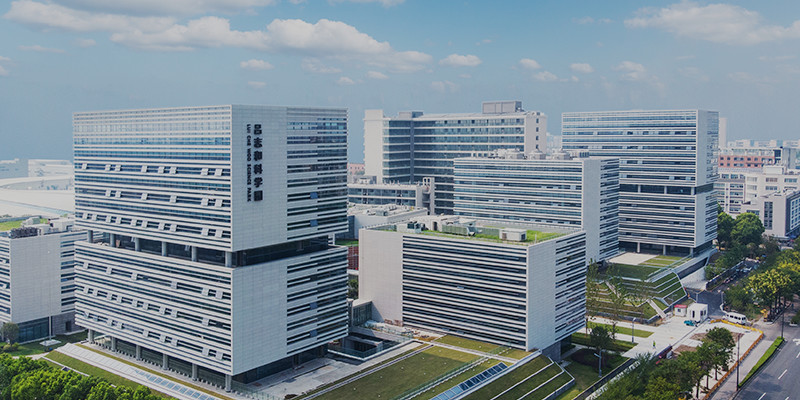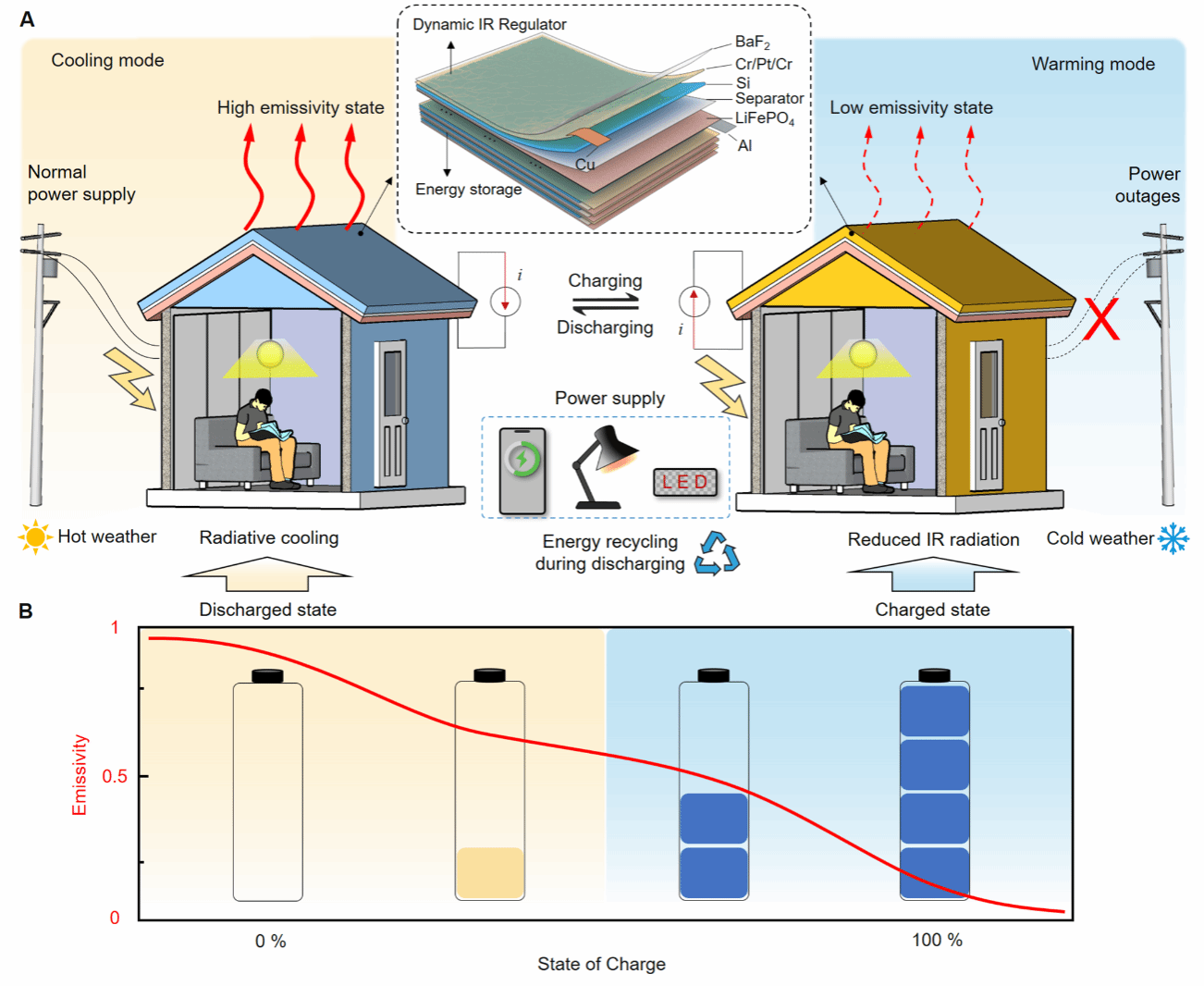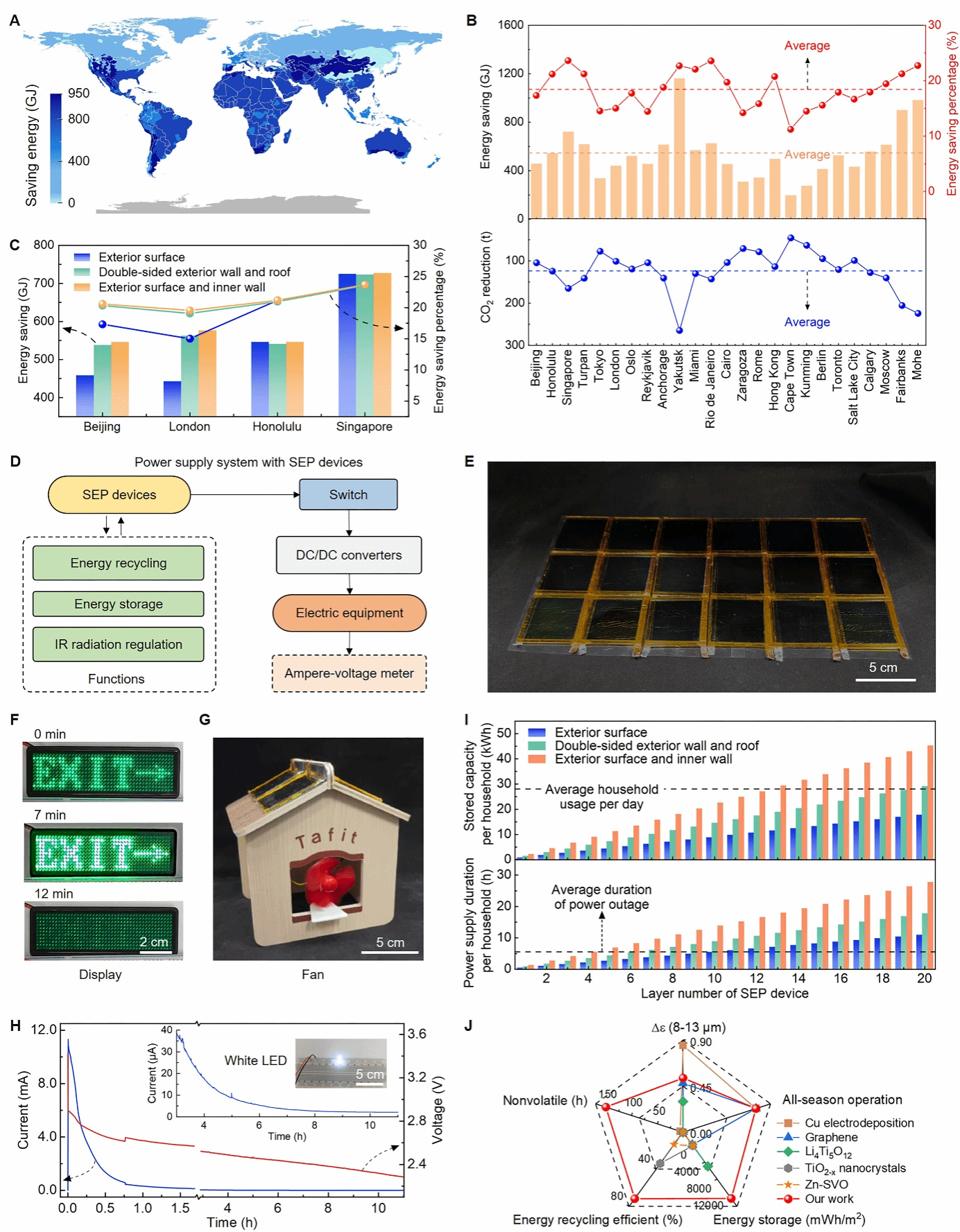搜索


Recently, Professor Han Zhou from the Future Materials Creation Center at the Zhangjiang Institute for Advanced Study, Shanghai Jiao Tong University, in collaboration with Academician Di Zhang from the State Key Laboratory of Metal Matrix Composites at the School of Materials Science and Engineering, SJTU, proposed an innovative "dual-functional photonic battery" inspired by the skin color-changing properties of cephalopods.This silicon-based device combines lithium-ion electrochemical reactions to dynamically regulate infrared emissivity through reversible lithiation/delithiation processes. It integrates both radiative cooling and solar heating functions while also possessing high-capacity energy storage capabilities. Simulation analysis shows that applying this material to buildings can significantly reduce energy consumption by up to 18.4% and cut CO₂ emissions by 124.1 tons/year, offering a novel approach to the development of energy-saving, electrically driven dynamic materials.
Against the backdrop of a global energy crisis and increasingly frequent extreme climate events, building energy consumption has become a "disaster area" in global energy usage. At the same time, power outages due to climate change and aging power grids are becoming more serious, affecting the normal operation of buildings. How to realize intelligent thermal management and energy self-sufficiency in buildings has become a key challenge in the development of green and low-carbon architecture.
To address the issue of existing thermal management materials having single functionalities and failing to integrate temperature regulation with energy supply, this study—again inspired by the color-shifting skin of cephalopods—proposes a novel photonic battery (SEP) that combines dynamic thermal management and energy storage. The design principles and fabrication process are shown in Figure 1. The device utilizes reversible lithium-ion insertion/extraction to induce phase and size changes in the silicon material, thereby adjusting its infrared emissivity. This enables radiative cooling in summer and heat retention in winter, along with efficient electrical energy storage and supply functions. Structural and optical modulation performance is shown in Figure 2. During lithiation, the reflectivity of the silicon layer increases significantly, achieving a tunable reflectance range of up to 0.67 in the mid-to-far infrared band (8–13 μm). Thermal management and energy storage performance is illustrated in Figure 3. The SEP device can controllably adjust infrared emissivity under different charge/discharge states—high emissivity during discharge (active cooling) and low emissivity during charge (heat retention). Meanwhile, the device provides a high energy storage capacity of up to 3271 mAh/g, ensuring stable power supply to electronic devices during power outages.Global energy consumption simulation analysis (Figure 4) demonstrates that when applied to building facades in various climate zones, SEP devices can achieve an average annual building energy saving of 18.4% and reduce CO₂ emissions by 124.1 tons/year, indicating broad application potential for energy conservation and green buildings. In the future, this technology may be widely adopted in areas such as building energy self-sufficiency, intelligent energy management, and protection against extreme environments.
The photonic battery proposed in this study opens a new direction for thermal management materials, achieving a multifunctional integrated design that combines thermal regulation with power supply. This technology can be applied to the outer shell of smart buildings, enabling active temperature regulation and reducing HVAC energy consumption. It also serves as an emergency power source, enhancing energy self-sufficiency under extreme conditions. In the future, this technology is expected to be applied in green energy-efficient buildings, extreme environment protection, and smart city energy management, contributing new material solutions toward carbon neutrality goals.
This study, titled “Dual-functional photonic battery enabling dynamic radiative thermal management and power supply”, was published in Advanced Materials (Adv. Mater.). Dr. Pan Wang from Shanghai Jiao Tong University is the first author. The research was supported by the National Natural Science Foundation of China and the Shanghai Science and Technology Development Fund.
Original link: https://advanced.onlinelibrary.wiley.com/doi/full/10.1002/adma.202412328










 Address:No.1308 Keyuan Road, Pudong District, Shanghai
Address:No.1308 Keyuan Road, Pudong District, Shanghai Phone:86-21-54740000
Phone:86-21-54740000 E-mail:zias@sjtu.edu.cn
E-mail:zias@sjtu.edu.cn